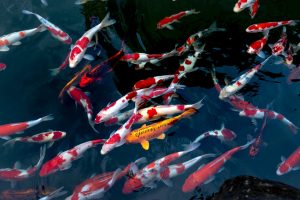Japan is a country that has been around for centuries. Over the decades, they developed their own unique culture, and the country is known worldwide as “the land of the rising sun.” Japan is a fascinating place that holds one of the largest economies in Asia and produces some incredible technology, art, food, and more. The people are polite, humble yet firm with their beliefs. This is what makes it an interesting destination to visit or live in.
What do you think of when you hear the word “kimono”? For most people, the first thing that comes to mind is a traditional Japanese dress worn by women. However, did you know that kimonos have a rich history and meaning behind their patterns? In this post, we will take a closer look at some of the most popular kimono patterns and what they represent.
Kimono and yukata robes are an important part of Japanese culture. Kimonos come in a variety of colors and designs, each with its own unique story to tell. Some of the most popular patterns include flowers, birds, and animals. While the specific meanings vary depending on the design, several themes are commonly found in kimono patterns. The Japanese language is rich with patterns and symbols. The kimono, for example, wouldn’t be so fascinating without these magnificent historical designs that constitute the beauty of Japan’s art culture.
Here are just some of the popular symbols and their meanings:
The peony flower is considered the queen of flowers in Japan. Its tranquility and beauty have made it an ideal symbol for many cultures. This is especially true of those with rich histories like China or Persia. They use this plant to make perfume among other things. The peony is a flower that symbolizes femininity and prosperity in Japan. The legend says it’s lucky to have this plant as your friend because not only does the bloom represent love but also honor.
The Dragon is an ancient creature that has been associated with water, sky, and clouds for centuries. They are often considered deities in Japan, a symbol of strength and power as well as luck and good fortune. The people who worshiped dragons believed that these creatures could control the weather, and bring rain and floods. They could bring relief from drought by swimming in the water and protecting farmers’ crops.
The koi fish is a symbol of love, perseverance, and courage. The word “koi” translates to ‘carp’ in English and is used because of their migratory habits. Koi migrate up streams and rivers from low-lying areas to reach higher ground. Reaching their goal symbolizes courage. Koi have beautifully colored scales and can become even more colorful as they reach adulthood. This makes it an ideal decoration on Japanese fabrics because of how aesthetically pleasing these designs can be done by skilled artisans.
The plum tree is an evergreen that grows in dry areas. It becomes the first to bloom at the beginning of each new season. The pink or white petals of the plum blossom have five rounds with a delicate fragrance similar to jasmine. They symbolize health and renewal because they come back again after blooming once more proving their beauty through evolution, grace, and elegance.
Butterflies are a symbol of good luck and prosperity. They also represent transformation, with the caterpillar turning into an adult butterfly after several days or weeks. The meaning behind this popular insect is that it’s lucky because of its metamorphosis. The transformation from caterpillar to adult insect reminds us that we must always be ready to change our lives to achieve what we desire most: happiness.
The crane is a monogamous bird that symbolizes longevity and good fortune. Long associated with happy marriages, if two cranes are seen, then it suggests a long life together with a partner. Today, people believe these creatures bring luck with them when they fly into homes or businesses because their legs mean longevity.
Chopa – Your Kimono Source is proud to bring these colorful and symbolic patterns to our customers. As a direct importer of fine quality kimonos and yukatas since 1994, we share our love of these beautiful works of art with anyone who finds the beauty within. This is but a small sampling of kimono symbolism. Keep watch for our next post with additional symbols and explanations. Shop our online store 24 hours a day to discover the kimono and symbolism that most intrigues you.
Tags: japanese kimono, kimono, kimono Japanese, Yukata









Well thought out explanation of the Japanese culture. I have always been fascinated by the symbolism and you make some great observations. Thank you for sharing.